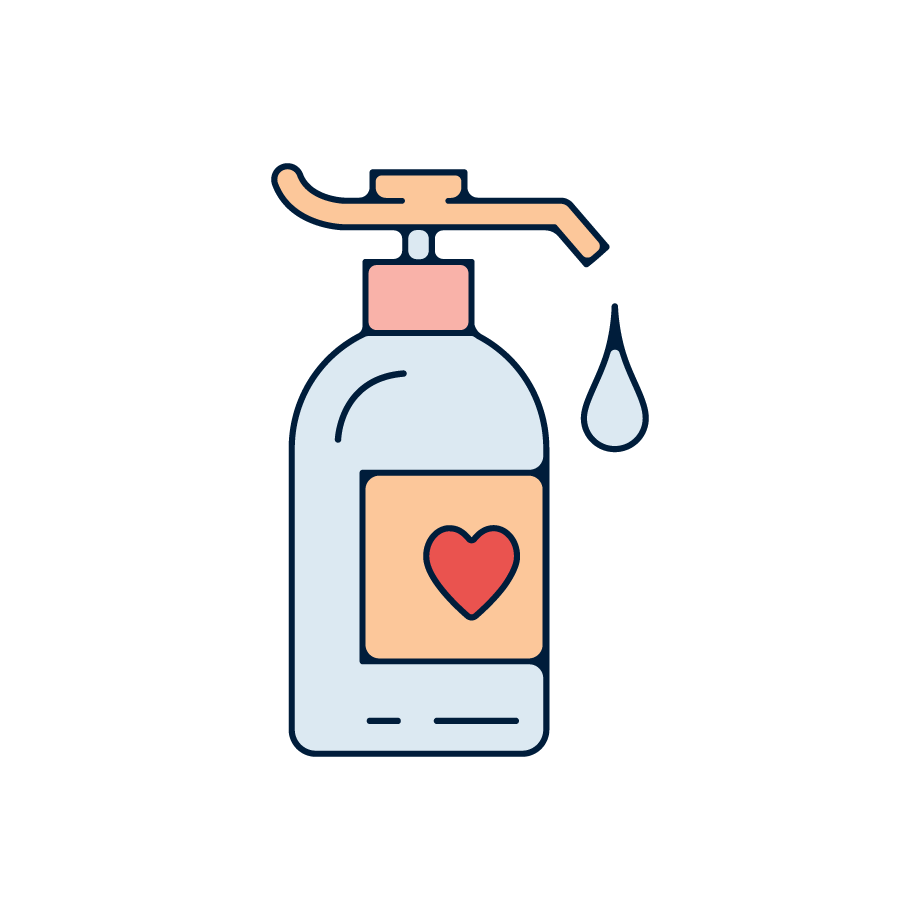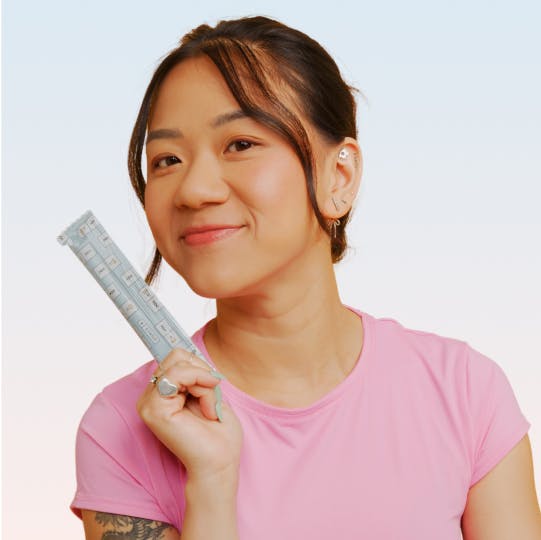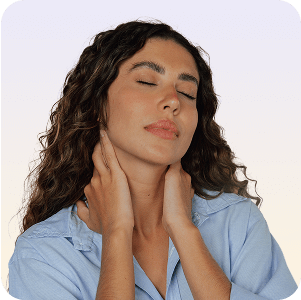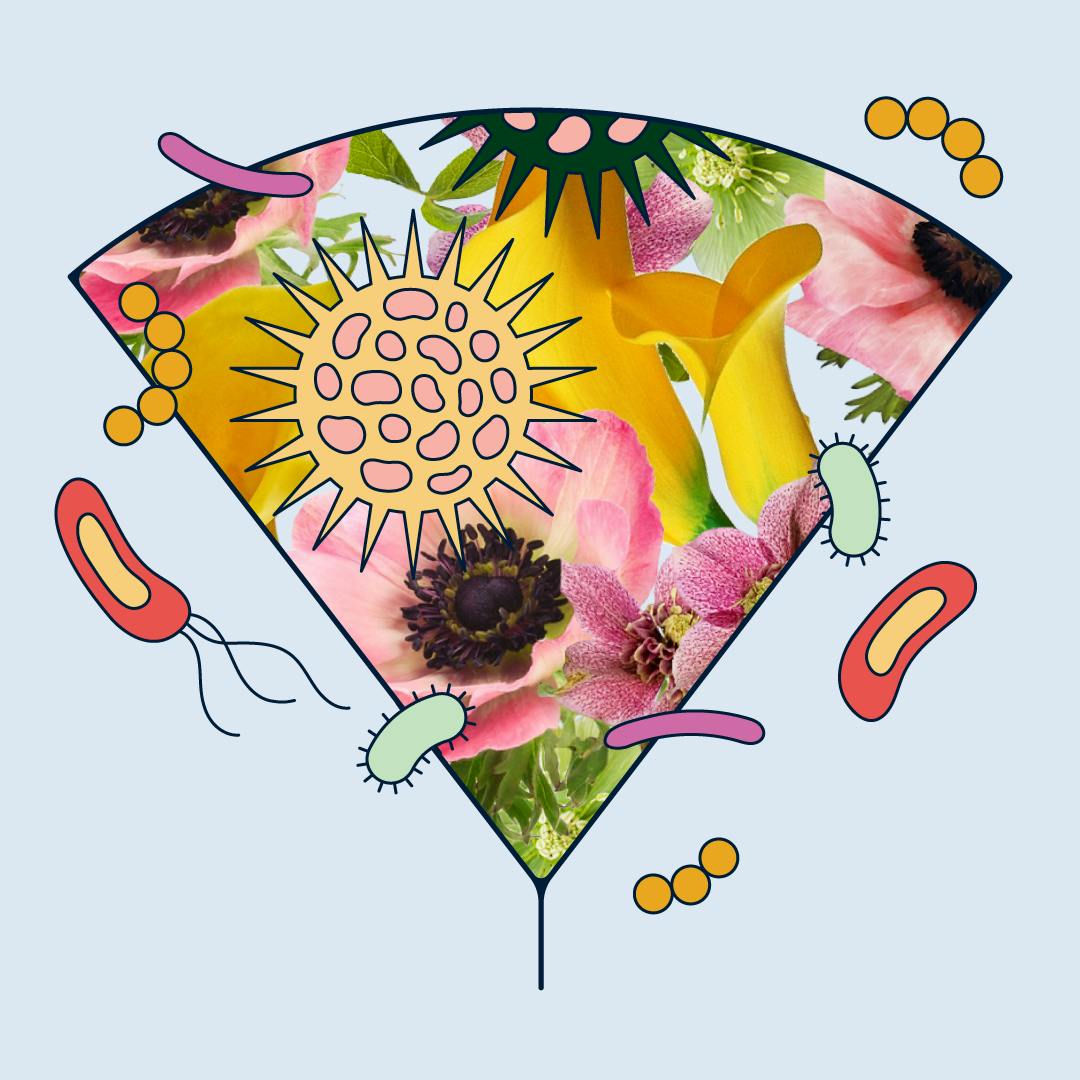Table of contents
1. So what does a healthy vaginal microbiome look like?
2. How do we optimise the vaginal microbiome?
3. Does my diet impact my vagina?
Natasha is a Registered nutritionist on a mission to help people reconnect with nature and tune in to their bodies' innate wisdom to optimise their health and fertility.
Medically reviewed by Sarah Montagu (NPs, SRH). Sarah is a highly-qualified sexual and reproductive health nurse with 15+ years of experience.
Illustrated by Sabrina Bezerra, Erin Rommel & Valentin Slavov
You are more microbe than you are human. You have more microbial cells in your body than human cells and more microbial genes in your body than human genes!
As such, we need to look after our microbiome - our collection of microorganisms found on every surface in the body including our eyes, lungs, skin, gut, mouth and vagina.
The majority of your microbes are found in your gut, in the large intestine, where they play a vital role in intestinal health, hormonal health, immune function and mental wellbeing.
But we also have an abundance of microbial species colonising the vaginal tract. Supporting a healthy vaginal microbiome is crucial to our vaginal health, fertility and even sexual satisfaction.

So what does a healthy vaginal microbiome look like?
During our reproductive years, oestrogen promotes the production of vaginal fluids that contain food for the beneficial family of bacteria known as lactobacillus in the vaginal tract*. We want our vaginas to be lactobacillus-dominant, as these bacteria produce things like lactic acid and hydrogen peroxide which keep our vaginas acidic. An acidic vagina (pH 3.8-4.5) helps to keep unwanted bacteria at bay, maintaining a happy ecosystem.
However, the vaginal microbiome is a complex ecosystem and several things can throw the vaginal microbiome out of balance. When our lactobacilli are low in number, at any age, this can encourage the overgrowth of less helpful bacterial species in the vaginal tract, which could contribute to infections, Bacterial Vaginosis, Aerobic Vaginosis, thrush, unusual discharge, unusual smells and higher risk of contracting sexually transmitted infections. An unbalanced vaginal microbiome has also been associated with difficulty conceiving (ref, ref), increased risk of miscarriage (ref, ref), poorer IVF success outcomes (ref, ref) and preterm birth (ref).
Your vaginal microbiome is also passed on to a baby during a vaginal birth, setting up their microbiome from day 0 - so if you are on your fertility journey currently, the vaginal microbiome should certainly be on your radar!
(*Note: As oestrogen levels fall during peri-menopause, our lactobacilli colonies tend to decline in number, so the vagina becomes more alkaline. This can contribute to symptoms such as vaginal dryness and Bacterial Vaginosis )
How do we optimise the vaginal microbiome?
With certain bacterial infections, medical intervention is sometimes needed so please do consult your GP about your symptoms and / or test results. For everyone else, there’s plenty we can do at home to support our vaginal microbiome. Small tweaks can make a huge difference. Here are some tips on how to get started:
- Do not wash inside the vagina, even with water! The vagina is self-cleaning. The Lactobacilli (good bacteria) cling delicately to the walls of the vagina it is easy to wash them away. Washing the Vulva (external genitalia) with plain water is fine
- If you’re concerned about the smell or something else, it may be due to an imbalance in the vaginal microbiome. Getting your vaginal microbiome tested with Daye or working with a specialist to address this may be beneficial
- Vaginal douches may affect the vaginal microbiome - they may get rid of some pathogenic bacteria, but also wipe out all the beneficial bacteria. Using them is always bad for the Vaginal Microbiome
- Use a pH balanced lubricant during sex (remember, we want to keep the vagina acidic!). Ensure it has few ingredients and is mostly natural. One option is Hanx’s lubricant.

- Opting for underwear made of natural fabrics may be better for the vaginal microbiome than synthetic fabrics like polyester which may encourage sweating and the growth of bacteria
- G-strings and thongs may also encourage the migration of bacteria from the anus to the vagina, which could upset the ecosystem of the vaginal microbiome - save them for special occasions rather than everyday use!
- Consider getting a vaginal probiotic, such as ProViotics by Daye to help populate the vaginal microbiome with beneficial bacteria
- Use organic, unbleached tampons, such as Daye’s Nude tampon, to cause the least disruption to the vaginal microbiome. Daye’s Nude tampon also doesn’t shed any fibres, unlike other tampons, which could also support the growth of bad bacteria
- Change your tampon at least every 4-8 hours
- Sterilise moon cups and sex toys in between use. Don’t share sex toys without cleaning them or covering them with a fresh condom
- Be careful with anal sex or using toys anally - be sure to wash the toys / penis before using them again in the vagina
- Change your tampon after a bowel movement
- Always wipe front to back to reduce the likelihood of bacteria migrating from the anus to the vagina
- Cigarette smoking has been associated with depletions in lactobacilli in the vaginal microbiome
- Supporting stress, maintaining a regular exercise regime and prioritising sleep may help to support the vaginal microbiome. Be sure to shower after exercise to reduce the likelihood of bad bacteria growing in the vaginal microbiome
Does my diet impact my vagina?
We have heaps of evidence now demonstrating the impact of diet on the gut microbiome. But we also know that there is constant communication between the gut microbiome and our other microbiomes - including the vaginal microbiome via the gut-vagina axis (ref) . As such, we can assume that what’s beneficial for the gut microbiome is likely to support the vaginal microbiome too. We do also have emerging evidence showing links between diet and the vaginal microbiome (ref). Here are our recommendations on how to optimise your diet and support your vaginal microbiome:
- Base your diet on nutrient-dense wholefoods, including vegetables, fruits, wholegrains, pulses, nuts, seeds, dairy, eggs, fish and unprocessed meats
- Eat probiotic foods such as cottage cheese, sauerkraut, miso, kimchi, kombucha, traditional cheeses (e.g. comte) and live yoghurt. Probiotic foods are rich in the beneficial lactobacilli, which may help to colonise the vaginal tract with beneficial bacteria. Look for unpasteurised “live” fermented foods (normally found within the refrigerated section of the store), or try making your own
- Eat prebiotic foods such as garlic, onions, leeks, Jerusalem artichokes, asparagus, apples, chicory and (relatively unripe) bananas – these all act as food for the beneficial bacteria
- All plant foods are beneficial - they all act as food for your microbes. The key is VARIETY - the research shows that people with the best gut microbiomes eat 30+ plant varieties / week (ref). This might sound like a lot, but the tally includes vegetables, fruits, nuts, seeds, pulses, legumes, herbs, spices and wholegrains. See if you can start challenging yourself to try new things and switch up colours (e.g. swapping a red pepper for a yellow pepper). Each colour of the rainbow contains a different set of nutrients and acts as varied food for the microbiome
- Moderate coffee consumption is good for the microbiome (ref) - coffee actually contains polyphenols which act as food for the beneficial bacteria. I’d advise no more than 1-2 cups a day, but you can also get the prebiotic benefit from decaf coffee if preferred. Green tea, dark chocolate and the occasional red wine also have a similar effect

Whilst at Daye we do like to largely focus on the things we can add into the diet, it’s important to note the things which have been associated with an imbalance in the microbiome. These
things we should therefore aim to minimise in the diet:
- Ultra-processed food e.g. biscuits, cakes and processed meats have been associated with an imbalance in the microbiomes (ref)
- Similarly, refined carbohydrates e.g. white bread, white flour, biscuits and white pasta may feed unhelpful bacteria (ref)
- The evidence is very clear around the detrimental effect of sugar on the gut microbiome (ref) - and it is also thought to be negatively associated with the composition of the vaginal microbiome (ref), particularly regarding its link to candida (ref). Opt for a low sugar diet - reduce the amount you add to your teas and coffees - and reduce consumption of sweet things like biscuits, cakes and ice cream
- Alcohol is detrimental to the microbiome (ref). The only exception is red wine, which may have some benefits (ref) if consumed only in moderation - i.e. up to 1-2 glasses / day (ref).
It’s time we started making vaginal health a priority. The good news is we can test our vaginal health - and all the tools at our disposal to optimise it for the better.







